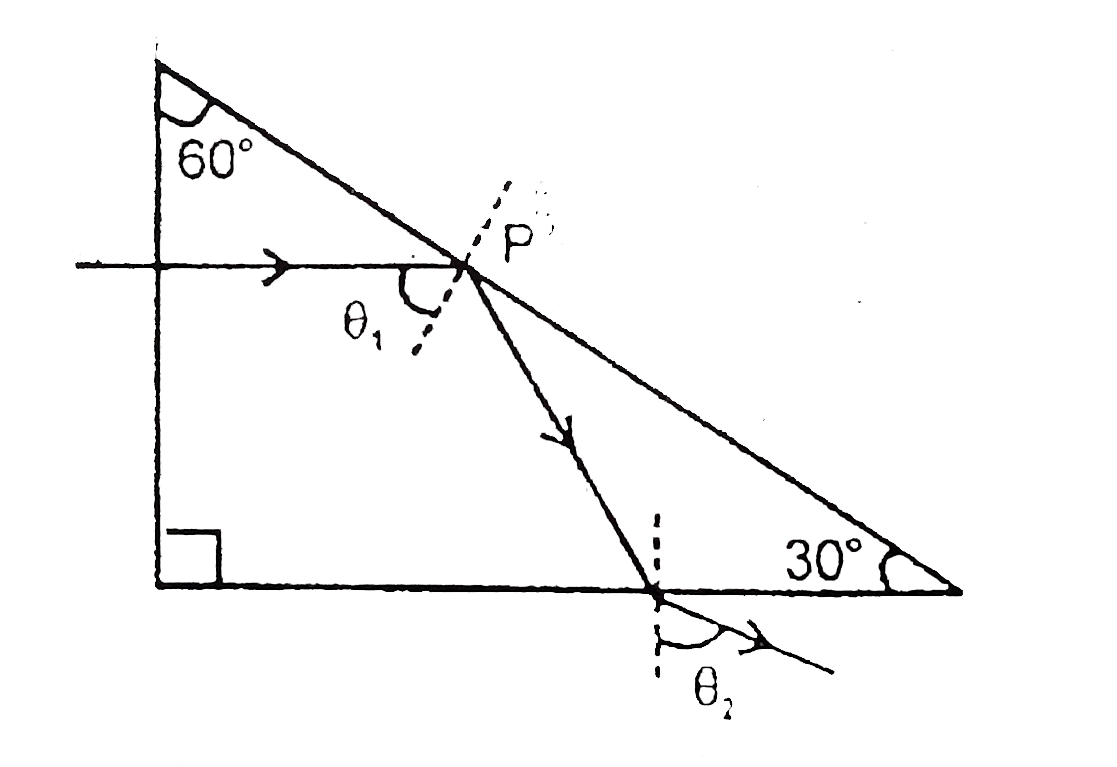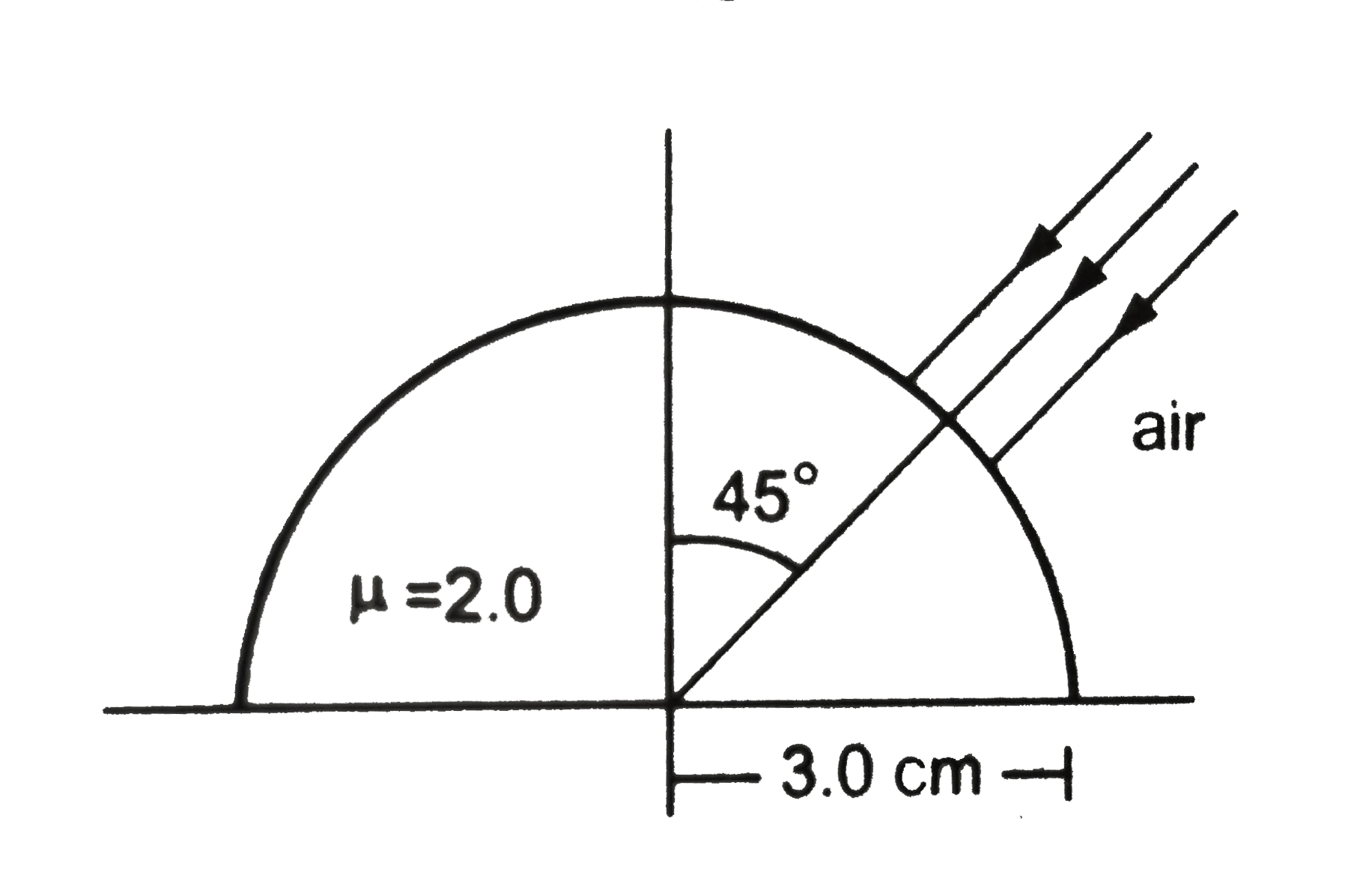Find the angle of devaition suffered by the light ray shown in figure for following two conditions. The refractive index for the prism material is μ=3/2.
(i) When the prism is placed in air 9μ=1)
(ii) When the prism is placed in water (μ=4/3)

The correct Answer is:(1) 1.5∘, (ii) 3∘8
NA
Topper's Solved these Questions
- BOOK - RESONANCECHAPTER - GEOMATRICAL OPTICS EXERCISE - Exercise-263videos
GEOMATRICAL OPTICS
- BOOK - RESONANCECHAPTER - GEOMATRICAL OPTICS EXERCISE - Exercise-379videos
GEOMATRICAL OPTICS
- BOOK - RESONANCECHAPTER - GEOMATRICAL OPTICS EXERCISE - Problem33videos
GEOMATRICAL OPTICS
- BOOK - RESONANCECHAPTER - EXPERIMENTAL PHYSICSEXERCISE - PART -II10videos
EXPERIMENTAL PHYSICS
- BOOK - RESONANCECHAPTER - GRAVITATIONEXERCISE - HIGH LEVEL PROBLEMS16videos
GRAVITATION
Similar Questions
Knowledge Check
- Question 1 - Select One or More

A ray of light is incident normally on one face of a prism as shown in figure. The refractive index of the material of the prism is 53 and the prism is immersed in water of refractive index 43, thenAThe angle of emergence θ2 of the ray is sin−2(58)BThe angle of emergence θ2 of the ray is sin−1(54√3)CThe angle of emerrgence θ2 of the ray is sin−1(73√4)DTotal internal reflection will not occur at P if the refractive index of water increases to a value greater than 52√3 by dissolving some substance. - Question 2 - Select One
Assertion angle of deviation depends on the angle of prism.
Reason For thin prism =(μ−1)A
Where =angle of deviation
mu=refractive index, A=angle of prismABoth assertin and reason are true and reason is the correct explanation of assertionBBoth assertion and reason are true but reason is not the correct explanation of assertionCAssertion is true but reason is flaseDBoth assertion and reason are false - Question 3 - Select One
When a ray of light is incident normally on one refracting surface of an equilateral prism (Refractive index of the material of the prism =1.5
AEmerging ray is deviated by 30BEmerging ray is deviated by 45∘CEmerging ray just grazes the second refracting surfaceDThe ray undergoes total internal reflection at the second refracting surface
A prism is made of glass of unknown refractive index. A parallel beam of light is incident on a face of the prism. By rotating the prism, the minimum angle of deviation is measured to be 40∘. What is the refractive index of the prism ? If the prism is placed in water (μ=1.33), predict the new angle of minimum deviation of the parallel beam. The refracting angle of prism is 60∘.
View SolutionThe angle of minimum deviation for a glass prism with μ=√3 equals the refracting angle of the prism. What is the angle of the prism?
View SolutionThe angle of minimum deviation for a glass prism with μ=√3 equals the refracting angle of the prism. What is the angle of the prism?
View SolutionWhen a ray of light falls on a prism of angle 48∘ , it suffers minimum deviation. Refractive index of the material of prism is 1.6. The angle of incidence is nearly
View SolutionWhen light rays are incident on a prism at an angle of 45∘, the minimum deviation is obtained. If refractive index of the material of prism is √2, then the angle of prism will be
View Solution

